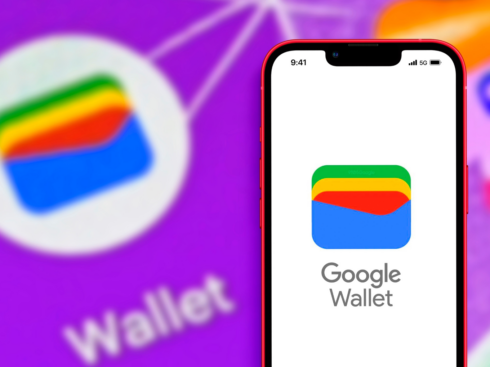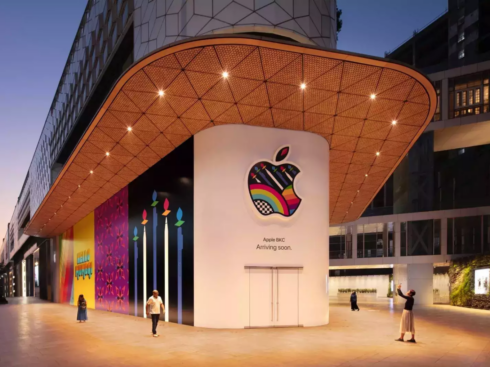
SUMMARY
The article showcases six guiding principles for choosing the best software for your company
Some enterprise apps can only be accessed only through the company's intranet
Good products help create good habits
Companies invest in business software because it can help the team do their job better. But a poor choice (by fit-to-need) only worsens the problem and adds to their burden.
I’ve seen too many cases of enterprises choosing the most popular option, only to realize (after making an investment) that it does not suit their unique needs. It ends up being an exercise in waste of resources and time, and frustrates employees leaving the organization back to square one.
Every SaaS product in the market seems to have great features, clean design, and customer logos of Fortune 500 companies on their website. But which one is the right one for you?
I’ve helped almost 500 enterprises with automation. Here, I distil that experience into six guiding principles for choosing the best software for your company.
With Enterprise Software, “Less Is More.”
Problem: In most large enterprises, an average employee interacts with about 15 to 20 apps, making it hard for them to keep track of things. And this can result in adoption fatigue, error, and utter confusion.
Some enterprise apps can only be accessed only through the company’s intranet. Others sit inside an internal portal run by the IT department. And most require you to remember different passwords and usernames. Very few of these apps are mobile-friendly, in other words very few are easy to access.
As surprising as this connection may seem, such poor experiences cause employees to think of their organization as “backward and disorganized”. They can really hurt employee morale in the long-run, reduce user satisfaction, and degrade company culture.
Solution: Try to choose software providers who bundle multiple modules into a single super app. For example, your team would want to access all HR related modules/apps from one place. This includes Onboarding, Leaves, Attendance, Payroll Management, Referrals and R&R – they’d want all of these to be packed into a single app on their phone.
Examples: Solutions like Darwin Box lets users access a plethora of end-to-end HR solutions from within a single app.
Choose Customization Over Everything Else
Problem: A best practice that works for company A will not always work for company B. And the same goes for a process workflow. Most enterprise apps are notorious for forcing companies with different needs and realities to choose a standard process workflow from available options.
I have seen many instances where two competing companies claim to have different strategies, but when you take a peek at their product stack, they’re using the same, rigid workflow, and as a result, the same strategy, perhaps even loosing-out on their differentiator in the process.
Solution: Pick a software product that lets you customize three key aspects
- Workflow: It should let you shape the process workflow and decide how your work flows through the teams and through different levels of your organisation.
- Business Rules: The software must let you create business rules across the workflow using a no-code interface. These rules are very important as they will help you govern your business process using automation. For example, if the nature of the case or transaction falls under category A, the system should trigger workflow Z and assign approvals to the right stakeholders. With a rule engine, you are in effect employing bots to ensure that your people follow the process rules, which gives you a great deal of control over every aspect of the workflow.
- Nomenclature: Whether your process is warehousing, inventory management or invoicing, you need to be able to modify the nomenclature for every drop-down menu, field, metric or item. The software should allow you to modify these specifics. This way, you can use terms that suit your industry and your team’s preference, allowing for faster and easier adoption.
Examples: Products like Track-It by BMC software offer maximum flexibility by letting their users configure their dashboards. They also allow them to regular metrics to select users or members of the management team.
Facilitate Habit Formation
Problem: Your software might become more efficient, but your people need to grow with it, else you won’t see an upside.
Solution: Good products help create good habits. Common knowledge, right? But it is still something that most enterprise apps fail to facilitate.
Look at the industry’s most iconic apps, and you will notice that they end up elevating their users to a higher level of operation.
For example, you would want your salespeople to be more data-driven, or your marketers to be more customer-centric; maybe you want customer support to have strong product knowledge. These “good habits” can differ from industry to industry, but it is important that the software you choose helps to incorporate these habits into your people and changes them for the better.
Tip: You can quickly learn about the habits that a product is trying to instil by glancing at their product pages and app onboardings during a trial.
Examples: Lemlist is a cold email suite that encourages sales professionals to hyper-personalize their emails for each prospect. This is a very good habit for any sales or business development professional to develop, since personalization is the key to high open rates in 2020.
Be Big, Powerful And Nimble
Problem: Giants are big, powerful, and armed with the best resources – but this also makes them incredibly slow.
Solution: How can large companies quickly reshape their workflows and business processes to take on young, nimble start-ups that are disrupting their market? With no-code tools.
It’s important your app of choice has plenty of no-code features that can allow your non-coders to reshape your business software/app’s flow or configuration without writing a single line of code. If you continue to depend on your developers to get things done, then even making a small change will take forever.
Ensure that there are enough no-code features that will turn your non-coder employees into citizen coders. Democratising app development will be one of the biggest game-changers at enterprises everywhere over the next decade.
Example: No-code tools like Webflow allow marketing teams to make complex changes on their web assets without writing a single line of code. This makes them nimble and frees them from tech dependencies, allowing them to go to market faster.
Include Gamification And Rewards
Instilling a healthy, competitive spirit across your organisation might be the oldest trick in the book, and it still works.
We are in 2020 and many consumer apps use gamification to engage their users. They often use leaderboards, badges, report cards and more. While not all Enterprise apps leverage such gamification capabilities, there are some that do. Try to choose them, as they can help you do two things: Recognise the organization’s top performers, and Raise the standard for the entire organization through healthy competition.
And if you want to take things up a notch, link the gamification framework to each team’s KPIs. It’s a sure-shot way to ensure that your people are working towards goals that really matter to your organization’s overall growth plan.
Topping all of this with a rewards and recognition program would make the whole experience incredibly satisfying. Imagine winning gift cards or holidays for reaching specific milestones or finishing on top of your team. This is the experience that millennials will love and find relatable.
Example: MindTickle is a Sales Readiness platform that uses gamified mechanics to elevate user motivation and foster healthy competition.
Enable Mindfulness
Most apps display metrics onto a beautiful dashboard to tell you how your business is performing. But very few of them do this for each individual employee.
Wouldn’t it be great if your business app could help your people audit their own day? It could show them what they accomplished and what they missed. This data could help them introspect, measure themselves, and plan better for the days ahead. This is a basic strategy used by professional athletes after every single day of practice. It helps them figure out what they can do to get that next big boost in performance.
Example: RescueTime, a productivity tool, offers daily reports to users to tell them how they spent their time. Not only does it highlight their biggest time drains and distractions, but also helps the user defeat them.
Conclusion
I urge you to revisit the basics when you choose the next enterprise/business app for your team. There are many apps in the market that offer these features. Consider choosing them because these simple principles can yield incredible results. Focus on the desires, needs, and aspirations of your organization, and map them back to your app. If there is a connection, then you have made the right choice.


























